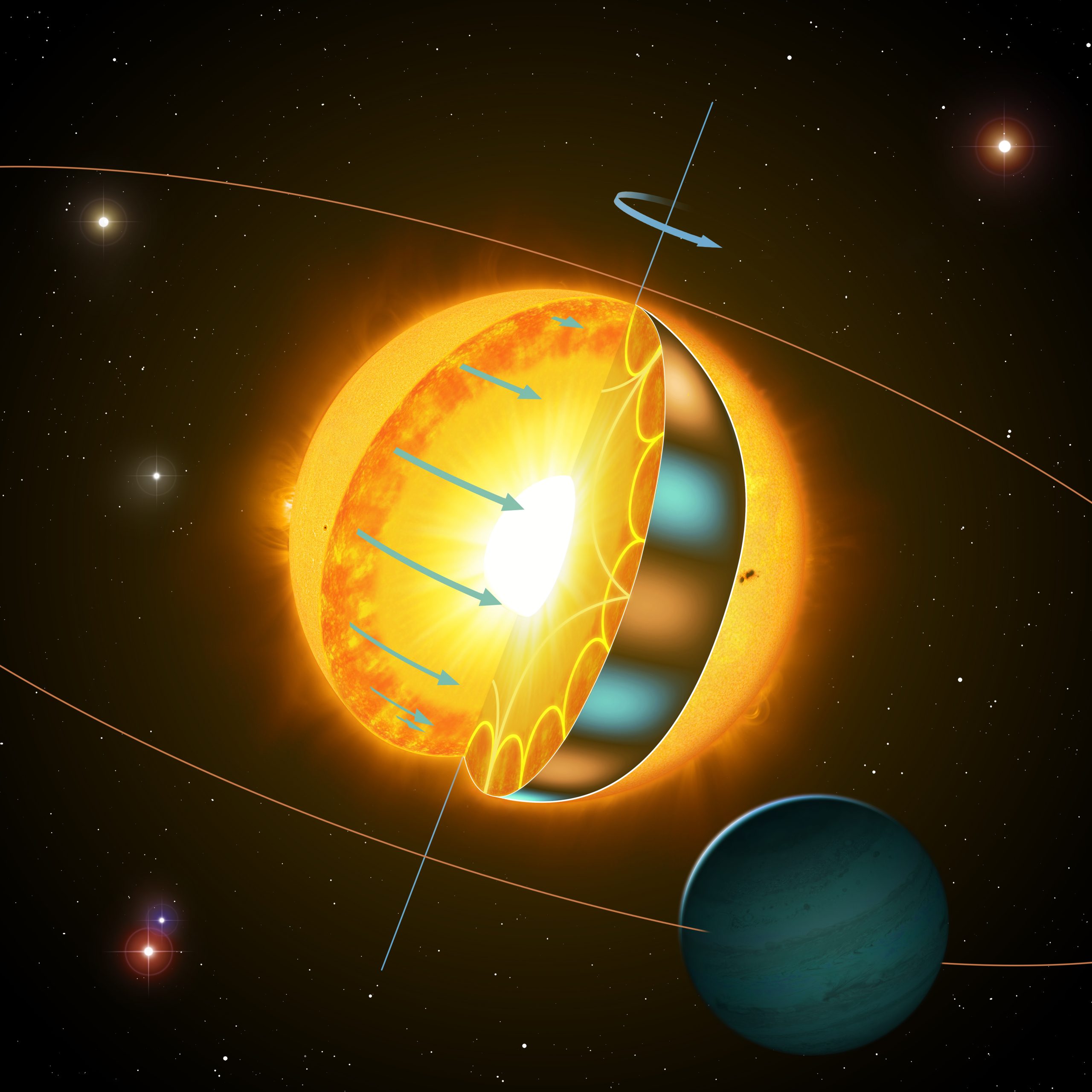Older stars rotate faster than expected
Not only humans lose mobility in old age – stars also rotate more slowly then. All stars are born with angular momentum that comes from the rotation of the protostellar cloud. Then, as they get older, their rotation slows in a process called “magnetic braking.” A study published in 2016 by scientists at Carnegie Observatories provided the first evidence that stars at a similar stage of life as the Sun are spinning faster than magnetic braking theories predict. The results of that study were based on a method in which scientists locate dark spots on the surface of stars and track how they move with the stars’ spin. However, while the method has proven robust for measuring angular momentum in younger stars, older stars have fewer stellar spots, which made the effects of this attenuated magnetic braking on these stars difficult to confirm.
In a new study published in Nature Astronomy, researchers at the University of Birmingham used a different approach to confirm that older stars do indeed appear to rotate faster than expected. The team used asteroseismology to calculate how the star rotates. This relatively new field of research allows scientists to measure the vibrations that cause sound waves trapped inside the star. By measuring the different properties of these waves, scientists can reveal certain characteristics of stars, such as their size or age.
In this particular study, the team measured the frequencies of the sound waves produced by the star’s oscillation. As the star rotates, these split into different frequencies. According to the authors, this can be thought of as the sound of two ambulances standing on a traffic circle versus when they are driving in circles. By measuring these frequencies, it is possible to calculate the rate of rotation, for both young and old stars.
One aspect that researchers believe may be key to the change in momentum loss is changes in the star’s magnetic field. Understanding how the magnetic field interacts with rotation will be an important area for future study and is being addressed by the study authors.
The results could also shed light on the activity of our own star over the next billion years, explains co-author Dr. Guy Davies: “These new findings show that we still have much to learn about the future of our own Sun and other stars. This work helps put into perspective whether or not we should expect lower solar activity and harmful space weather in the future. To answer these questions, we need better models of solar rotation, and this work is an important step in improving the models and providing the data needed to test them.”
